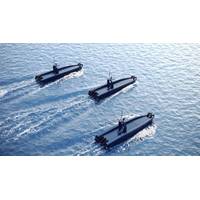
Metal Shark Debuts Prowler Autonomous Vessel and Frenzy Micro-USV
Louisiana-based boat builder Metal Shark has unveiled Prowler, its new autonomous, amphibious, and semi-submersible military craft engineered to meet the current and near future warfighting requirements of the U.S. military and its allies. The company is also debuting Frenzy, a high-performance, low-cost, amphibious micro-USV (uncrewed surface vehicle) with a payload carrying capacity of up to 14 pounds.“Prowler represents the sum total of everything we’ve learned while building 400-plus autonomous and remote operated vessels for our military customers over the past decade,” said
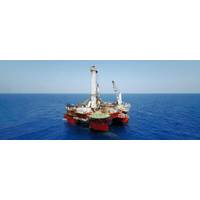
Helix Secures Five-Year Decommissioning Contract in Gulf of Mexico
is expected to start in the second quarter 2024, Talos Energy said in an update.This follows Helix Energy Solutions’ engagement in the U.S. Gulf of Mexico from 2023, when the company secured a 39-well decommissioning contract in with an unnamed client.The project was awarded to Helix's Louisiana-based subsidiary Helix Alliance, which used the EPIC Hedron heavy lift derrick barge for structure removals, liftboats for plug and abandonment activities, the Triton Explorer dive support vessel for pipeline abandonments, and multiple Helix Alliance OSVs and several other Helix Alliance assets
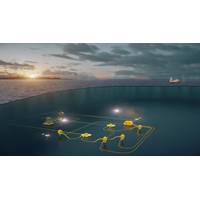
TechnipFMC to Supply Subsea Systems for Shell’s Sparta Development
,” said Jonathan Landes, President, Subsea at TechnipFMC.To remind, Seatrium recently started fabrication of Sparta semi-submersible floating production unit (FPU).The Sparta FPU will be located in the Garden Banks area of the U.S. Gulf of Mexico, approximately 275 kilometers off the coast of Louisiana. It will feature a single topside bolstered by a four-column, semi-submersible floating hull and is designed to produce 90,000 barrels of oil equivalent per day (boe/d).Sparta development straddles four blocks of the Garden Banks area in approximately 1,300 meters (4265 feet) of water depth.Seatrium
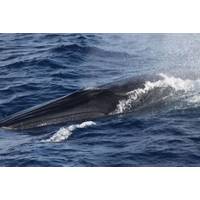
Rice’s Whales Heard in the Western Gulf of Mexico
ocean sound from a variety of sources, including whale sounds. The team used specialized software to analyze the recordings for Rice’s whale calls, which were then validated manually by an experienced acoustic analyst.The team deployed these long-term passive acoustic recorders offshore of Louisiana and Texas for 356 days, and in Mexican waters for 680 days. They detected Rice’s whale calls on 25 percent of days recorded offshore of Texas, and 33 percent of days recorded off Louisiana. These findings provide additional support for Rice's whales' persistent occurrence in the western
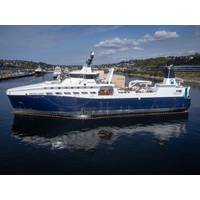
Kongsberg Discovery Partners with Arctic Storm for Advanced US-built Trawler-processor
pollock in over three decades is now undergoing sea trials in the Northern Pacific, testing an integrated technology package from Kongsberg Discovery tailored to locate, inspect, and engage fish with unparalleled efficiency.The 100-meter-long Arctic Fjord, designed by Kongsberg Maritime and built by Louisiana’s Thoma-Sea Marine Constructor, will start full-time operations for 2024’s pollock A season in the Bering Sea.Speaking ahead of this week’s Pacific Marine Expo in Seattle, Washington, Kongsberg Discovery reveals that the vessel, which replaces Arctic Storm’s original, 1974-built
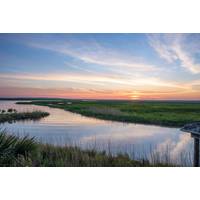
NOAA Awards $16.8 Million for Research in the Gulf of Mexico
$1,734,775Project Description: The project team will collect spatial and temporal data at population and landscape levels to determine disturbance impacts and build on existing numerical models to better assess resilience capacity for seagrass habitats adjacent to the Chandeleur Islands off of coastal Louisiana.Project Title: Colony Island Network Design and Implementation (CINDI): a prioritization tool to rehabilitate colony islands along the Texas coastLead Institution: Texas A&M University in Corpus ChristiAward Amount: $2,000,453Project Description: The project team will develop a prioritization
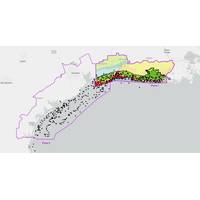
CGG Releases Gulf of Mexico Carbon Storage Study
a desktop-ready well database and web-based visualization dashboards for informed and rapid decision-making.Dechun Lin, EVP Earth Data, CGG, said: “CGG continues to expand its GeoVerse portfolio of expert-driven and data-rich screening studies. This newly released study that spans the Texas and Louisiana gulf coast provides critical subsurface information to accelerate exploration for suitable carbon storage sites in this promising region.&rdquo
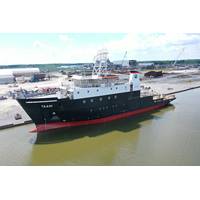
Bollinger Launches OSU's New Oceanographic Research Vessel
.The second vessel, the R/V Narragansett Dawn, will be operated by the East Coast Oceanographic Consortium led by the University of Rhode Island. The third vessel, the R/V Gilbert R. Mason, will be based in the Gulf of Mexico. It will be managed by the Gulf-Caribbean Oceanographic Consortium, led by the Louisiana Universities Marine Consortium and the University of Southern Mississippi.The 200-foot ships are unique, with new technologies and other features to enhance operational capabilities, improve safety and expand ocean-based research. Each ship is designed to operate with 13 crew and up to 20 scientists
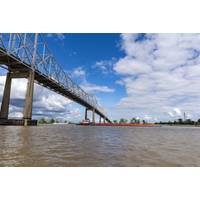
Shell Aims to Harness the Power of the Lower Mississippi
field. The report identified three priority use cases where ORPC power systems could contribute toward decarbonizing Shell’s existing operations, the first of which is to provide power for Shell’s onshore facilities.In early April, ORPC technicians traveled to multiple Shell sites in Louisiana. With support from Louisiana State University, they assessed each location’s viability to support the production of hydrokinetic power generation. Resource characterization at the sites is ongoing, along with stakeholder engagement. This most recent award will focus on acceleration towards



 February 2024
February 2024





